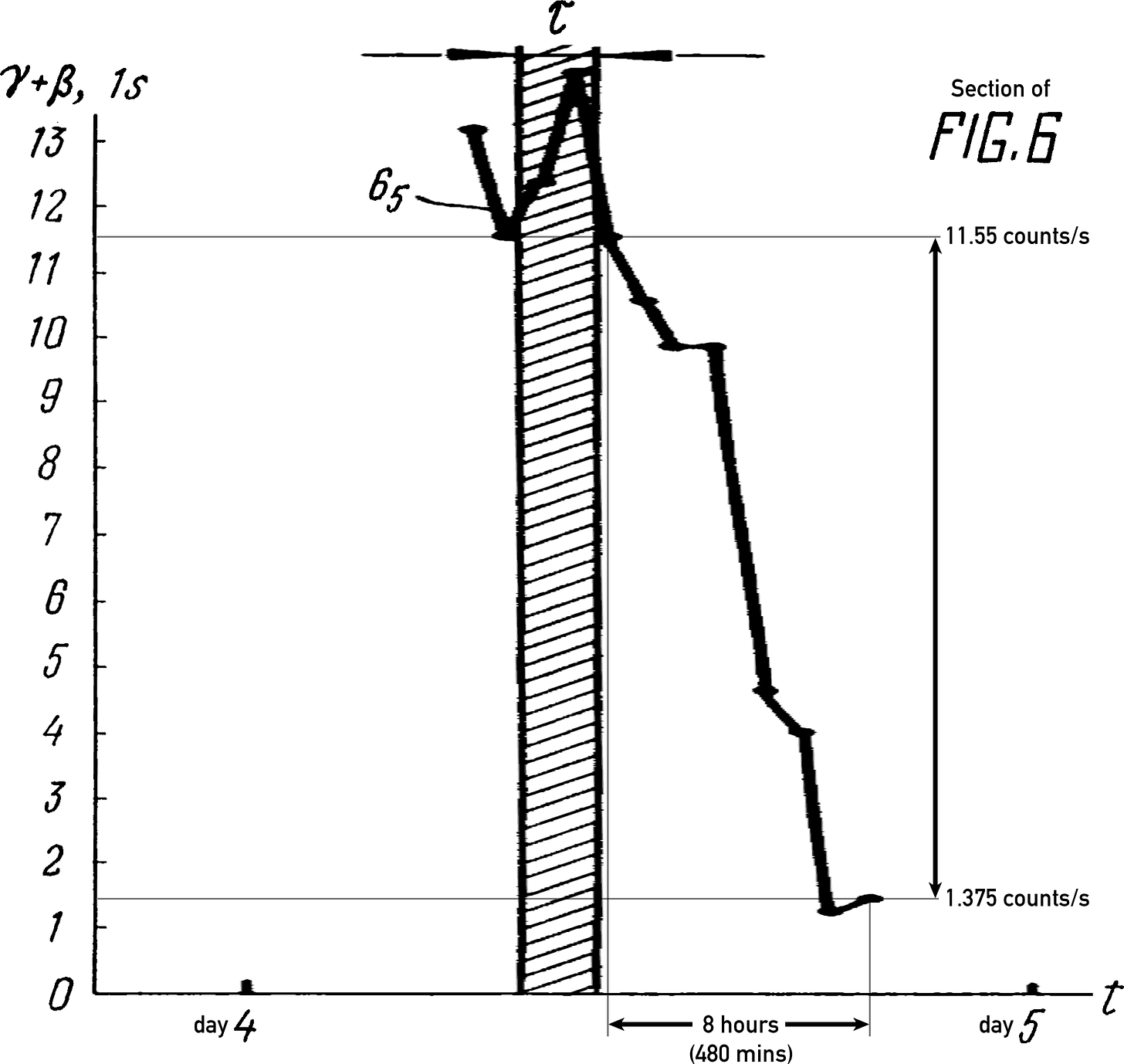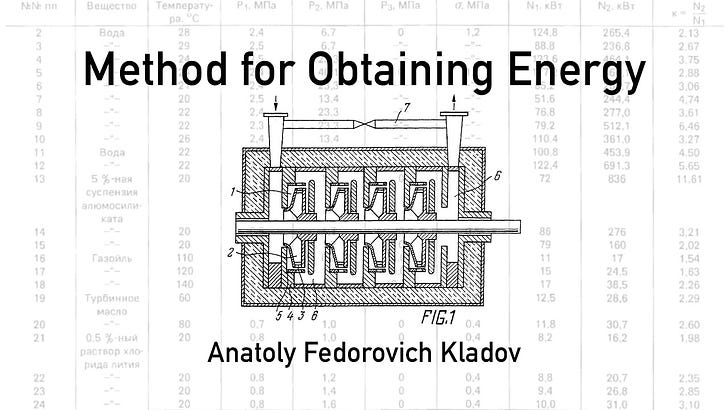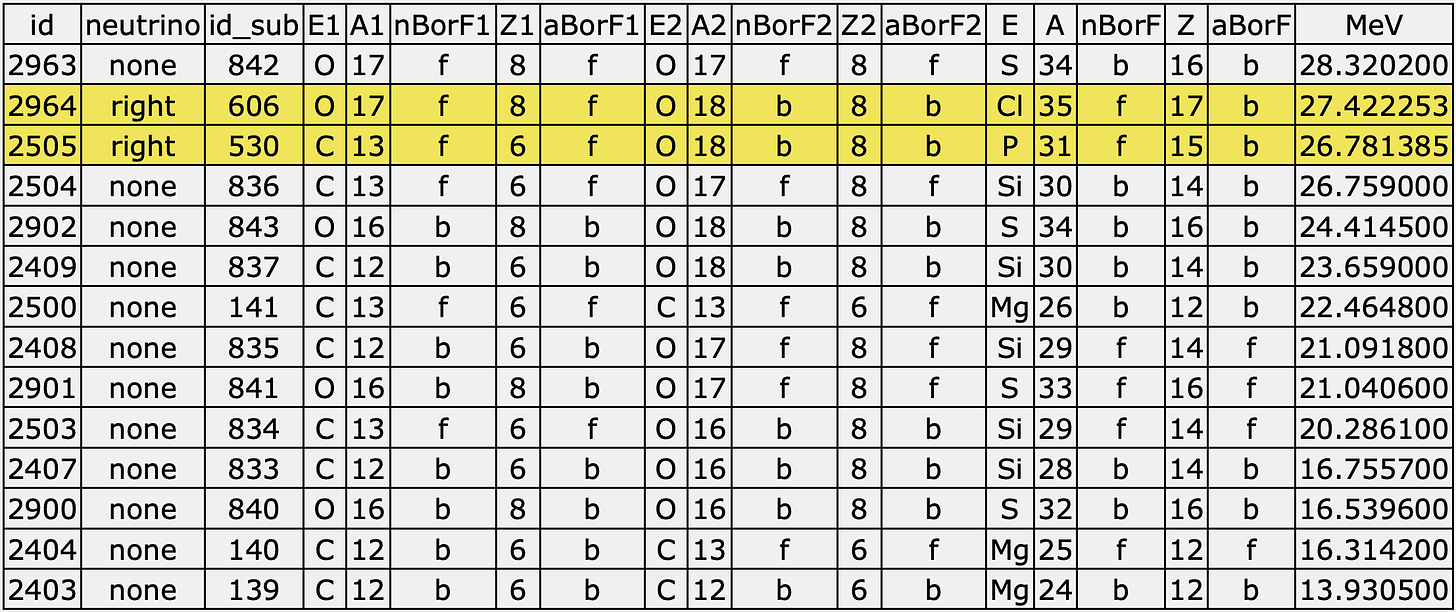Live-streamed on Tue 13 Feb 2024 at 22:00 CET
Having painstakingly re-constructed the intent of Anatoly Fedorovich Kladov's July 1993 awarded patent from numerous sources, I shall go through it, discussing how Bin-Juine Huang and his teams' independent work supports the claims made and how we may be able to use Kladov's expired patent to solidify the reality of ultrasonic driven nuclear processes and accelerate the delivery of practical embodiments.
A special thank you to Alexander Shishkin, for helping me locate the first source online of a version of the patent.
My predictions of reasons for the extra COP produced after addition of 5% aluminosilicate suspension
Based on the experience of the MFMP, in ULTR, where, in an experiment conducted by Alan Goldwater, Al foil under cavitation appeared to produce Fe rich crenellated microspheres and the experience of the wider LENR community, where Fe has been the most abundant synthesised reaction product [see for instance Fig. 3 in this old blog], it stands to reason that adding aluminosilicate suspension would yield a higher coefficient of performance. If we look at some possible fusion reactions with the query
E1 in ('Al', 'Si') and E2 in ('Al', 'Si') and E in ('Fe') order by MeV desc
we get
and with exchange reactions
E1 in ('Al', 'Si') and E2 in ('Al', 'Si') and E4 in ('Fe') order by MeV desc
without neutrinos, we get
As we can see, there are potential high yield reactions with Al and Si, but the greatest is the direct fusion of 2 x Al. It would be interesting to do an assay of the desiccated product to find out if there had indeed been Iron synthesised as hypothesised.
My predictions of reasons for γ + β-radiation observations
In Figure 6, plot 65, carbon dioxide in an amount of 10-6 kg/s was added after which there appears to be a clear decay of some synthesised isotope.

In an 8 hour period between the 11th and the 19th hour of day four, the 1 hour average counts per second is recorded to have dropped from 11.55 to 1.375. Knowing that we have added CO2 to achieve this, one could reasonably consider that the isotope responsible could be due to the fusion of Carbon and Oxygen, which we are aware can typically produce Silicon. Using the MFMPs Parkhomov data reaction tables, programmed by Phillip Power with the following query:
E1 in ('C', 'O') and E2 in ('C', 'O') order by MeV desc
Gives:
There are two options in Table 1, indicated by the yellow highlight. The MFMP reaction calculator used is designed to not show radioactive products with a few deliberate exceptions such as Tritium. However, in a more violent rather than resonant system such as extreme cavitation with flow, one might imagine that some products never get ‘remediated’ in the active structures. So instead of 35Cl we may see 35Ar, however, this is unlikely as 17O is naturally the rarest isotope of oxygen (0.037%). Moreover, if it is synthesised, as I hypothesised for Bin-Juine Huang’s system and suggest is the cause for the Fe in Sundarasen and Bockris, then its spin component means it is preferentially kept in the structure due to its paramagnetic nature, and the only Oxygen nuclei with spin and so it goes on to produce 22Ne and 56Fe respectively in combination with 12C from further fusion of the 34S produced.
Moreover, if 35Ar is produced, its half-life is just 1.7756 s by positron decay and the signal would be lost over several seconds after the turning off of the cavitator and not meaningful across the sampling points shown.
This leaves the 31P, which would actually be 31Si in a not very resonant system being more likely. This would be because 18 oxygen is more abundant (0.204%) than 17O (0.037%) and 13C far more abundant at 1.11%, than 17O. So on the balance of probabilities, in this kind of system, perhaps 31Si is more likely of the possible fusion related products. It could also be produced by the fusion of 14C and 17O.
From [5],
We can see that the decay is 100% β- with a decay average of 595.638 keV and maximum of around 1.492 MeV. The half-life is 157.24 mins. From this we can say that the sample interval of 8 hours, constituting 480 mins, is equivalent to 3.053 half-lives. Calculating the derived data from the plot in Fig. 1 above and comparing it with the calculated level based on time elapsed and counts per second, we can see that the data supports the proposed hypothesis for 31Si production and subsequent decay to 31P.

Therefore, for a sufficiently aggressive, non resonant cavitation system operating in the correct regime, it may be possible to add an amount of Carbon Dioxide in closed loop and realise this nuclear reaction signature.
NOTE: Figure 7, plot 73 showed a similar decay signature for the addition of carbon dioxide in an amount of 2 · 10-6 kg/s Graph 74
My predictions of reasons for neutron radiation observations
Fig. 8 shows the background neutron radiation count recorded over around 8 hours, which rests between 0.01 and 0.05 counts per second. Fig. 9 shows apparent neutron counts present during the operation of the cavitator after the addition of LiCl. The counts observed are over 3 orders of magnitude (more than 1000x) that of background, exceeding 65 counts at one point close to the device. Even at 0.5m, the count was 100x and at 3.2m, still 20x. Of course, this indicates that the radiation was more likely to be real neutrons, since strange radiation is mostly observed within 0.25m of a reactor (Parkhomov/Zhigalov and separately Zatelepin/Baranov).
Having looked at possible reactions between isotopes of Li and Cl, there are no fusion products that would decay with a neutron. However, as we see in the work of Shishkin below, hydrogen isotopes appear to quickly fuse in cavitation (producing Deuterium from presumably two protons and an electron in some kind of weak interaction).
In addition he saw Fusion of hydrogen isotopes into oxygen isotopes, resulting in the synthesis of more 18O relative to the starting water. Of course, Bin-Juine Huang observed increase in 17O in his cavitation systems. Additionally, Max Fomitchev-Zamilov observed production of N and O from C and hydrogen implying both synthesis of deuterons and sequential fusion with C. In all of these three works, neutrons appear to be produced in cavitation from protons and electrons and fusing into heavier elements.
My proposal therefore is that neutrons are captured by the Lithium sequentially. For instance, until Lithium 10 is produced which decays effectively instantly to 9Li via a neutron.
7Li + 3p + 3e- + 3 cold antineutrinos > 10Li

From [5], we can see that 10Li decays with a neutron 100% of the time, and since 8Li has a half-life of over 838ms and 9Li over 178ms, one might imagine that there is plenty of time for rapid and intense neutron synthesis to take 7Li to 10Li, but there is no time to go from 10Li on.
This is where I hypothesise the neutrons that Kladov observed were coming from.
References
Flynn, H, G. (19 May 1978) “Method of generating energy by acoustically induced cavitation fusion and reactor therefor”
Kladov, A. F. (2 July 1993) “Method for Obtaining Energy” (original transcribed version with better table but terrible formula)
Kladov, A. F. (2 July 1993) “Method for Obtaining Energy” (click on “original document” for original typed and hand-written version)
Kladov, A. F. (2 Nov 1992) “Ultrasonic activator”








This presentation really nailed it for me, especially after enduring all that BS from those clowns on Twitter/X! The precision of Kladov's work is amazing. Thanks.
Unrelated to stream.
Got recommended a video about cavitation happening between gears in fluid, thought it was interesting.
https://youtu.be/a_o0v9mPkhU?si=tsuxXW2OKzdwMqTr